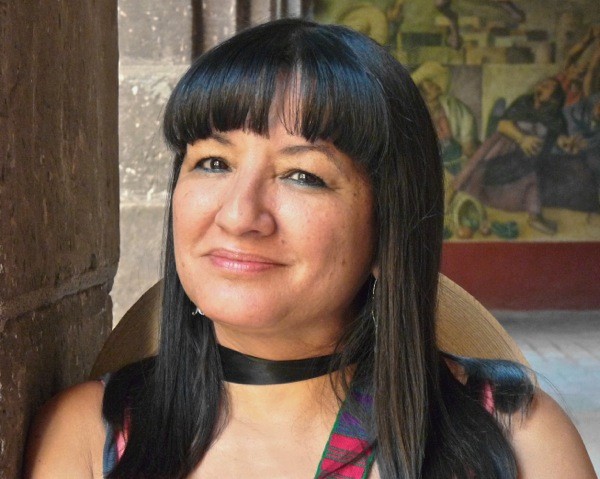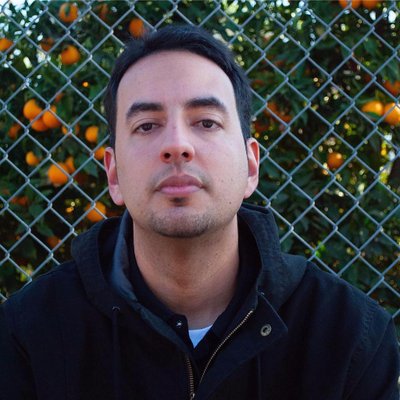
“We can be certain love exists,” Sandra Cisneros wrote to her readers, “because its power transcends death.”
The acclaimed Chicana author is contemplating the fragility and ferocity of life anew as Día de los Muertos nears. The Mexican cultural tradition brings her to the Museum of Latin American Art (MOLAA) in Long Beach for a celebratory Selena-themed gala on Friday. The altar Cisneros made for her late mother Elvira Cordero Cisneros named “A Room of Her Own” will be previewed at the event for the museum's first-ever Day of the Dead art and altar exhibit that runs after until November 29. The famed author of The House on Mango Street also just released a new book this month titled A House of My Own to rave reviews.
]
Cisneros is making a special appearance at Friday's Fotos y Recuerdos fundraiser for MOLAA and a special, but sold out, book reading on Saturday at the Museum. The Weekly interviewed her about Day of the Dead and her new book ahead of this weekend's events.
OC Weekly (Gabriel San Román): What has your experience been with Día de los Muertos in life?
Cisneros: I didn't grow up with Day of the Dead, actually. It was introduced to me by artists. It's more of a custom from the smaller towns and rural communities in Mexico. My father was from Mexico City. They see it as some pagan, peasant custom. While I did not grow up with it, that does not mean my grandmother or great grandparents didn't practice it, but it's not something my father knew about or that we saw practiced by my Mexico City relatives. My mother's family is from the countryside in Guanajuato so I'm very certain they practiced it, but not in my lifetime because my grandmother died when I was five. I found out about it when I had seen altars twenty years ago through the artist community in San Antonio. A lot of artists started practicing the traditional Day of the Dead altars and doing processions. That inspired me to create my own altar. It wasn't until my father died that I understood what the purpose and process was.
What was the process like for making the altar to your mother that will be exhibited?
It's kind of like the same process of writing an essay, poem or story. You collect all these things first and then you organize them. Next, you edit them and keep editing until you understand something you didn't know when you began. That's how I feel in creating the altar. It's very much like writing. I have adapted it to space. It began at the National Museum of Mexican Art in Chicago. I had a very little space, about the length and width of a twin bed. Then, it moved on to the Hispanic Cultural Center where we had this entire room of our own which is very apropos since the altar is called “A Room of Her Own.” Then it went on to the Smithsonian in in a small space next to Archie Bunker's living room. Finally, now it's in Long Beach, so it's moved around a lot yet each time we strike it up, we are fine tuning it. It's not going to be identical to the one prior and it won't be identical to the next one either. It keeps changing.
What are some of the key offerings that are representative of your mother's life and when did your mother pass away?
My mother died in 2007 but it took a two years before I had to strength to do the altar. This will be the final time it's traveling. It will be donated to the museum where it began as part of their permanent collection. When you think of an altar you think of a table. We recreated my mother's bedroom, because that was the room she finally got on her own in the last ten years of her life. She was 77 so she had to wait 67 years before she got a room of her own. She loved that room. There are some real things from her room or inspired from her love of museums, libraries and books. She was very fond of classical music. She sang and she drew.
She was very frustrated because she never got to realize her own potential. Without being aware it, she opened the door for her kids to reach their potential. I wanted to create something for my mother before she became my mother. It's not a glorification of my mother. She was definitely an unhappy camper, a prisoner of war. I wanted to figure her out because she was a very complex individual. She was not your typical Mexican mother at all. She was very well read, a ninth grade drop out who read Noam Chomsky, Carlos Fuentes and Paulo Freire. She could've run for office. She was super smart but very limited by the time in which she was born.
There's things on her altar that are typical and some that are not. I just tried to make a bed and put things on it that's a recreation of her room, which was her sanctuary to enjoy the things she enjoyed. I wanted to pay an homenaje to that person. There's a lot of writing, of course. I'm a writer. I started writing on the walls and the glass of the photographs.
How does the altar “A Room of Her Own” relate, in any way, to the similarly titled book you have out called “A House of My Own?”
My mother features in a lot of the essays. She's in several places in the book. At the same time I created the altar, I was also working with essays and stories trying to figure my mom out.
What did you learn spiritually from making the “A Room of Her Own” altar?
One of the things I like about the altar is that it inspires people to create their own. Creating an altar isn't a hobby, it's a sitting meditation just like you would sit for someone who has died and meditate on that. It's a process of transforming your grief into an illumination of life. That's what I learned from doing that. It wasn't like altars I've done of the past like an altar to my hero Zapata or women of the world. This is different because your heart gets broken open and that's when you do your best work. You have to be in that open heart place. You know when your done when you transform that grief into illumination.
The thing I like is people who don't know our culture are so moved by it. A lot of people, whether Latino or not, ask permission to assemble something and to mourn. We're not taught to mourn in our culture. That's something that art gives us, the power of transforming the negative into something positive. It's very healing.
There was a period in your life that you call in the book “the year of my near death.” How do you relate to that time as a form of death, particularly on Day of the Dead?
We have a lot of deaths in our lives and a lot of rebirths. That year of my near death was a very self-destructive year. I've lived life long enough to know to just hang in there. There's resurrection in our lives, chapters of dying, shedding old doubt and after that, there's a resurrection. People don't realize that.
For altars, Day of the Dead is the opposite of Halloween because Halloween is the fear of the dead and zombies that terrify you. Day of the Dead is welcoming the dead, communicating with your dead and knowing they are your spirit allies that can guide and protect you. It's a very different concept than a spook coming to get you. In Mexico, you invite the dead to come and sit with you.
Fotos y Recuerdos Day of the Dead fundraiser at the 8:00 p.m. Museum of Latin American Art (MOLAA), 628 Alamitos Ave., Long Beach, molaa.org; (562) 437-1689, Fri 8 p.m.-1 a.m. $125. Sandra Cisneros: A House of My Own Book Reading at MOLAA, Sat. 3-5 p.m. $9. (Sold out)
Follow us on Twitter @ocweeklymusic. Like us on Facebook at Heard Mentality.

Gabriel San Román is from Anacrime. He’s a journalist, subversive historian and the tallest Mexican in OC. He also once stood falsely accused of writing articles on Turkish politics in exchange for free food from DönerG’s!

